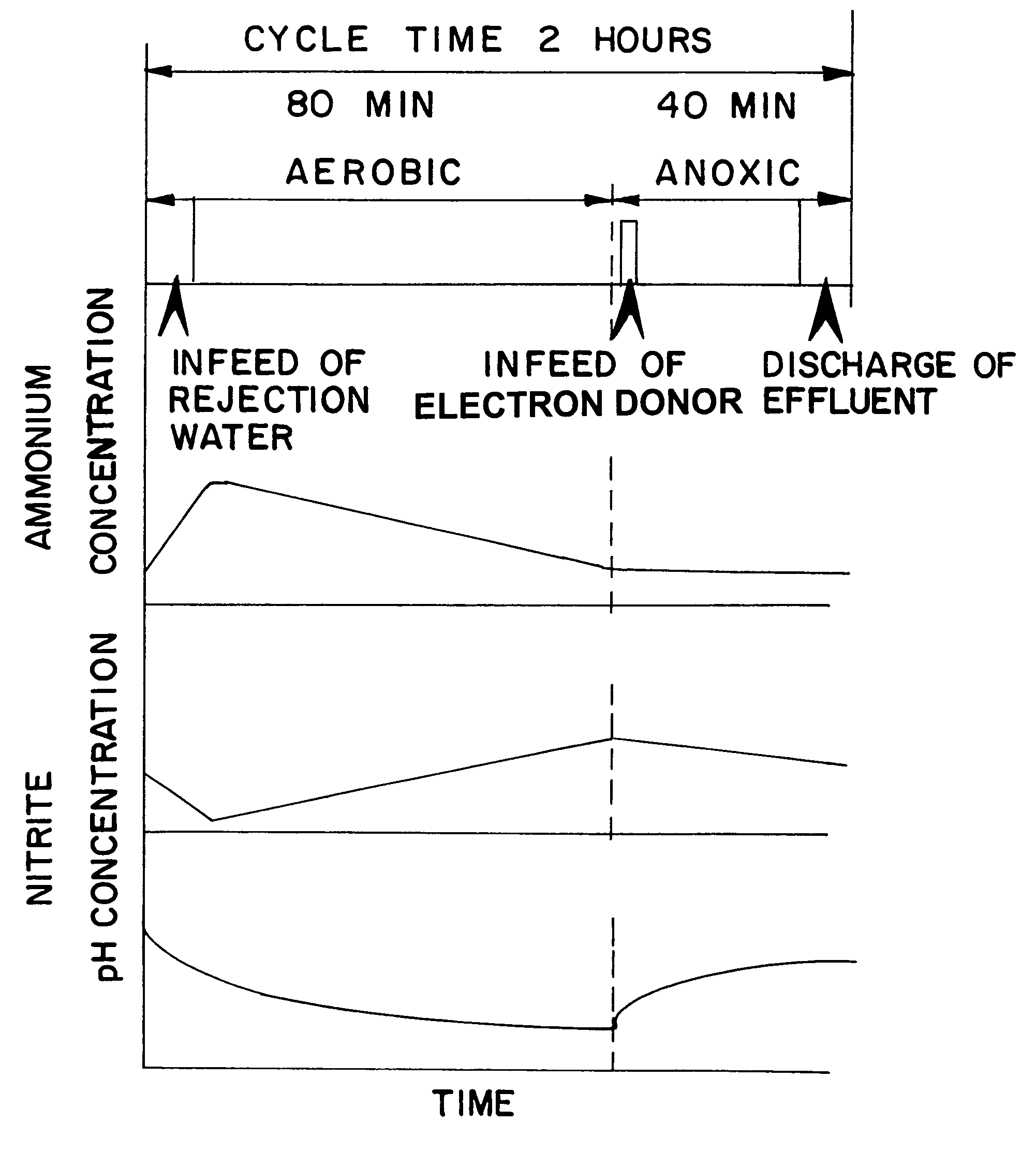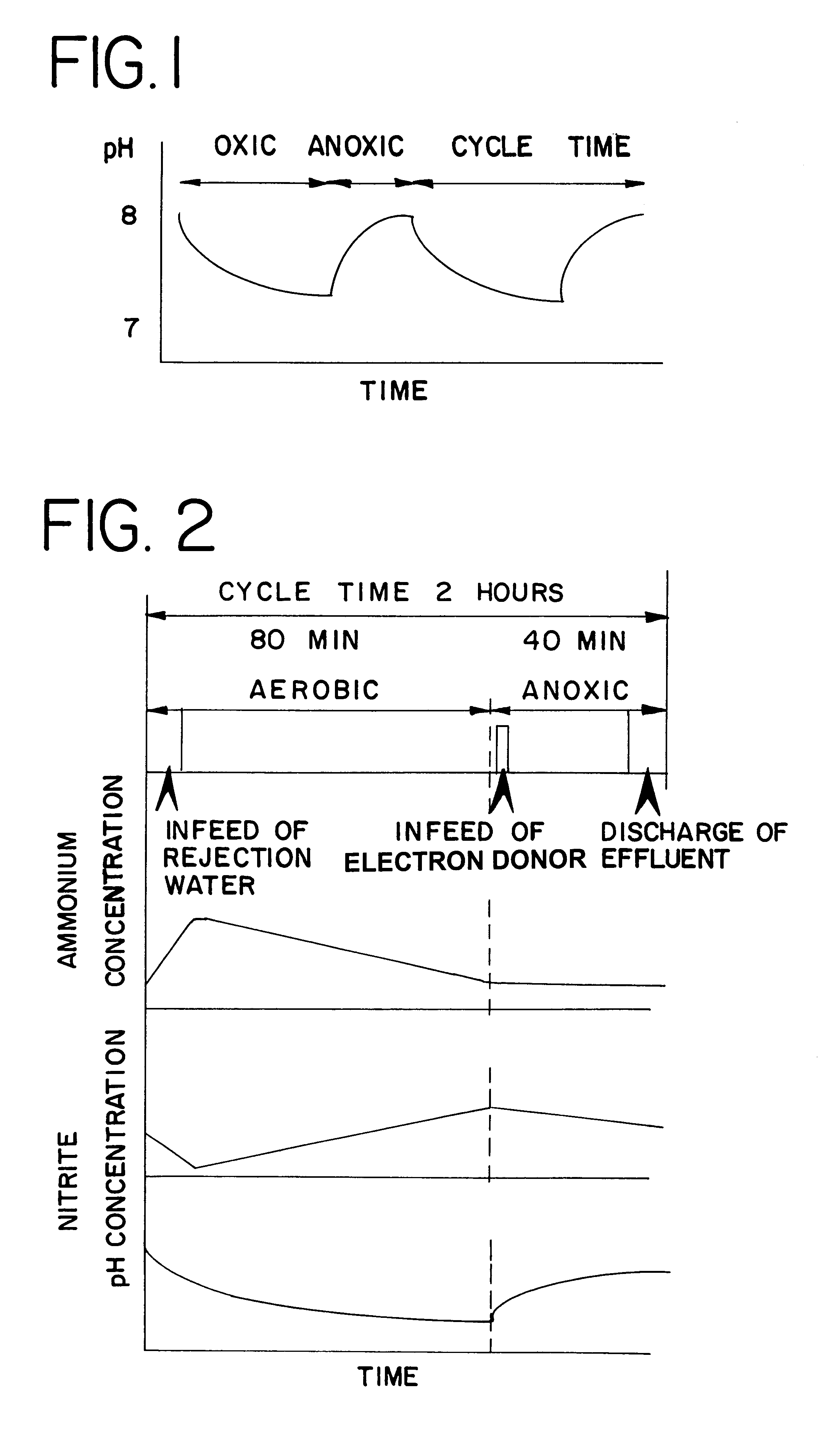Biological treatment of wastewater
a technology of biological treatment and wastewater, applied in biological water/sewage treatment, water/sludge/sewage treatment, separation devices, etc., can solve the problems of reducing the stability of the nitrifying process, and increasing the control temperature of the process over 40.degree. c., which is not advantageous to the stability of the present process
- Summary
- Abstract
- Description
- Claims
- Application Information
AI Technical Summary
Problems solved by technology
Method used
Image
Examples
Embodiment Construction
In this example a continuous flow reactor without sludge retention was employed. Such a reactor makes it possible for the bacterial population having the lowest maximum growth rate to be flushed from the system selectively.
The reason for this is that a retention time can be used which is lower than the maximum reciprocal growth rate of the one bacterial population (in this case the nitrite oxidizers which oxidize the nitrite present to nitrate), but is higher than the maximum reciprocal growth rate of the other bacterial population (in this case the ammonium oxidizers). Flushing out the nitrite oxidizers therefore leads to a build-up of nitrite in the reactor.
The reactor used had a diameter of about 20 m and a height of 6 m and therefore an effective volume of about 1150 m.sup.3.
The influent for the reactor, the so-called rejection water, had a temperature of about 30.degree. C. and an ammonia concentration of about 1000 mg of N / 1, while the total amount of rejection water fed in wa...
PUM
| Property | Measurement | Unit |
|---|---|---|
| temperature | aaaaa | aaaaa |
| temperature | aaaaa | aaaaa |
| size | aaaaa | aaaaa |
Abstract
Description
Claims
Application Information
 Login to View More
Login to View More - R&D
- Intellectual Property
- Life Sciences
- Materials
- Tech Scout
- Unparalleled Data Quality
- Higher Quality Content
- 60% Fewer Hallucinations
Browse by: Latest US Patents, China's latest patents, Technical Efficacy Thesaurus, Application Domain, Technology Topic, Popular Technical Reports.
© 2025 PatSnap. All rights reserved.Legal|Privacy policy|Modern Slavery Act Transparency Statement|Sitemap|About US| Contact US: help@patsnap.com


